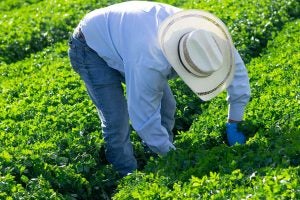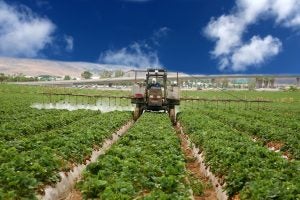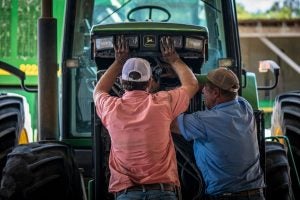Every year I aspire to have my holiday shopping done before Thanksgiving. Every year I fail miserably. But this year, failure might actually mean disappointments on Christmas morning.
As we (quickly) head into the busiest part of the holiday season, it’s increasingly hard to ignore the economic issues we’re facing: supply-chain problems, inflation, and labor shortages (to name a few). Grocery-store shelves, while not empty, are sparse in places. (My usual haunt hasn’t had my favorite coffee creamer in two months.) Shipping companies are warning about delays in deliveries. And everyone, literally everyone, is trying to hire additional employees.
Unfortunately, these economic conditions aren’t expected to return to normal anytime soon.
Agriculture hasn’t escaped the pinch either. It’s an especially hard blow for farm families coming off several years of bad economic conditions. Just like the rest of the nation, they’re facing higher costs and dollars that don’t go as far. But it doesn’t end there.
Labor Shortages
Hiring farm workers was no easy task before the pandemic, with many farmers turning to migrants to fill their workforce. It’s not hard to understand why: Farms usually require more manual labor, lower wages, and less-comfortable working conditions (hello air-conditioning!). It’s especially difficult in the fruit and vegetable sectors, which still have few mechanical options.

Those problems now seem like a cakewalk. Farmers have stiff competition in an economy that can’t seem to get enough help. Desperate companies are offering flexible hours, premium wages, and sign-on bonuses — and they still can’t find enough workers.
Out-of-Reach Inputs
Did you know there was a glyphosate shortage last spring? The problems varied across the supply lines with shortages of active ingredients, shortages of containers, and an inability to ship the product. The forecast for 2022 is more of the same with the industry anticipating shortages and higher prices. To put that into context, one dealer reported shipping costs going from $3,000 per container to $16,000 per container.

Fertilizer has a similar story. Between spring and fall 2021, the price of NPK increased 45 percent. That’s equivalent to 35 cents per bushel for corn. In Nebraska, one dealer reported a 200-percent increase between 2020 fertilizer prices and today’s prices. The increases are so dramatic that many farmers are faced with a tough question: can we still afford to farm?
Breakdown Woes
Farm machinery breaks down. It’s inevitable. Luckily, new parts and a mechanic who can fix it are usually a phone call away. And most parts can be shipped to dealerships within a day or two.
But we aren’t living in normal times. Parts and components are trapped in ports. When they arrive, it can take longer to get them distributed around the country. And even the items produced nationally are depressed from labor shortages or missing components.

The result is longer wait times and higher priced parts. Sometimes you can’t wait though. We’ve heard of some combines going down for weeks in the middle of harvest. Depending on where you live, that could mean a farmer misses the window of opportunity to get a crop out of the field until spring. Or the alternative options: Rent equipment that’s available or hiring a custom harvest crew. Either way, it’s an added expense.
When all of these issues come together, it can spell trouble. As I mentioned, the economic outlook for farming hasn’t been positive for a number of years now. And these additional challenges will only make it worse.
But this time these economic struggles aren’t unique to agriculture. They’re felt across all industries. And it looks like they’re going to stick around for the near future. Here’s hoping all our family farms — and other family businesses — can outlast them.
Amanda Zaluckyj blogs under the name The Farmer’s Daughter USA. Her goal is to promote farmers and tackle the misinformation swirling around the U.S. food industry.



